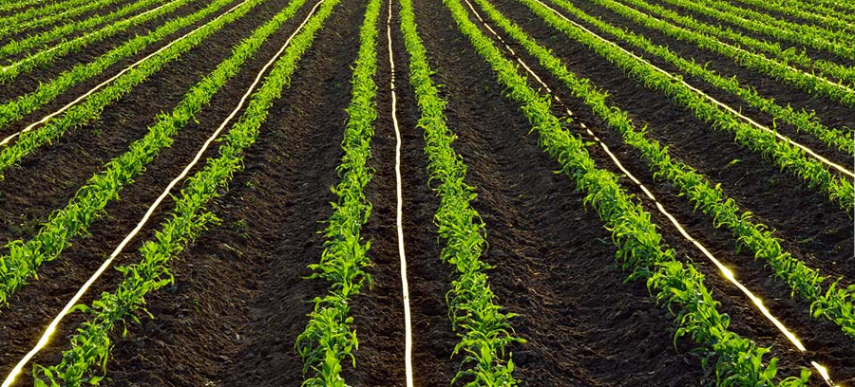Beyond the Smart City
IoT, Automation, and Machine Learning on Today’s Modern Farm
As published on the Modern Agriculture blog
The bright lights of the big city aren’t as bright as they used to be, because they’re getting smarter. Street lights in cities like San Diego are turning off, and conserving energy, when vehicles and pedestrians aren’t nearby.
It’s not just the lights. Everything in today’s modern city is in line for a tech upgrade. Connected garbage cans will tell waste haulers when they need to be emptied, optimizing collection routes. Smart buildings will notify maintenance staff of impending repair needs. And parking spots will find you, saving a lot of frustration, travel time, and traffic congestion.
The “smart city” is a familiar concept, but the advances in technology making it possible aren’t confined to the city limits. They’re working in rural farm country too, helping modern agriculture grow more efficient and more effective every day.
In fact, some of the innovations making smart cities so convenient, sustainable, and even futuristic, were raised on the farm.
From the field to Fifth Avenue, several core technologies are driving this modern era: advanced sensor capabilities and IoT connectivity, autonomous vehicles and drones, and machine learning.
FROM SMART GRIDS TO PRECISION AGRICULTURE
In the city, smart grids deliver power when and where it’s needed, based on real-time data from a network of internet-connected sensors. The system monitors electricity usage, reporting shortages or outages instantly while smart relays and switches reroute power around problems automatically. It’s all designed to make the electric grid more resilient and more reliable, using less energy.
The same type of two-way communication and resource optimization is happening in modern agriculture. Drones and wireless soil sensors located throughout the farm give growers detailed information specific to exact sectors in the field, including variables such as soil moisture, nutrition levels, salinity, temperature, organic soil matter, and more.
The data can then be used to automatically guide variable rate application systems such as drip irrigation. Like the smart grid, variable rate irrigation delivers water on-demand, and only where it’s needed.
The information can also go directly to the farmer, creating a digital field map of current soil conditions and a custom prescription for the day’s work. When used in concert with GPS tractor guidance and smart implements, growers can apply the exact amount of nutrition, pest control, and other resources precisely when and where they’re required.
AUTONOMOUS VEHICLES AND AUTOMATED AGBOTS
Self-driving cars are currently filling the headlines, and it won’t be long before they’re filling the streets. Robotic buses in Singapore are scheduled to roll out to three municipalities by the year 2022.
In Toronto, an entire waterfront district full of smart innovations is planned. Among the developments is an exclusively autonomous transit system using significantly narrower streets. As it turns out, unmanned vehicles can navigate much more precisely than humans. Conserved land will be used, instead, for green spaces and more generous pedestrian walkways.
While self-driving vehicles will be motoring around cities soon, they’ve been working the farm for decades. Successful autonomous tractor tests date back to 1997, when a prototype created perfectly straight beds accurate to within an inch. Today’s farmers might still ride in the cab, but the tractor does most of the driving.
Automation is freeing up the farmer’s time for other tasks, and helping to tackle another problem for growers. For every agriculture job seeker in the U.S., there are two open positions. And it’s getting harder, not easier, to fill them.
Agricultural robots, or agbots, are being designed to help out on the farm, enabling growers to increase productivity and reduce crop loss while offering alternatives in a labor crunch. Automated harvesters are already able to identify and pick only the ripe apples, strawberries, and tomatoes, all without bruising. By 2024, robots are forecast to navigate the farm to the tune of an estimated $5.7 billion agbot industry. That’s five times the market size as of 2016, with an almost 25% compound annual growth rate.
MACHINE LEARNING IN SMART CITIES AND MODERN AGRICULTURE
The connectivity of smart cities and modern agriculture brings with it mountains of data, and the increasing ability of computers to analyze millions of inputs, learning and optimizing on the fly.
In the city, machine learning will make a big difference for your morning commute. Thousands of cameras and sensors will analyze real-time traffic flow, and employ pattern recognition to control traffic lights, reduce congestion, and cut travel time by as much as 25%.
In modern agriculture, computers will process a staggering number of inputs—including visual characteristics, chemical signatures, climate variables, and thermal images to name just a few—learning how to better care for crops. New agbot prototypes currentlybeing field tested can autonomously navigate the farm, using machine learning to identify all plant types and remove only the weeds.
Crop photos from the same robots, as well as drones and satellite imagery, can also be used for detecting plant stress, disease onset, and pest infestation. In plant breeding applications, computers can be trained to identify the expression of traits sooner than the human eye could. By comparing data points from millions of photos, these systems learn to distinguish healthy plants—or desirable characteristics— from those that are showing early signs to the contrary.
WHAT’S ON THE HORIZON?
If the last 20 years are any indication, the future of smart city progress will mirror that of modern agriculture. The city and the farm are miles apart on a map, but they’re closer than you might think when it comes to using the latest advancements in connectivity, automation, and machine learning. Farmers and urban planners continue to find new ways for data to help inform
better decisions while doing more with less energy and fewer resources.
The future farm might look a lot different too.
Mixed sowing—planting a variety of crops next to each other—is prohibitive today. Industrial-sized harvesters can’t handle such a practice, and traditional methods favor economies of scale. In the future, our concept of scale will change. Miniature agbots will be able to match the best seed to the exact soil conditions in a precise location, returning months later to identify and harvest individual plants.
This heterogeneous approach will make fields unrecognizable by today’s standards. It will make pesticide use more efficient, conserve natural resources, and improve soil health. And speaking of scale, it will also increase harvests, keeping all those smart aisles in smart grocery stores in smart cities stocked.



